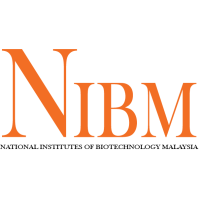The rose/wax apple (Syzygium samarangense) is a tropical fruit native to Southeast Asia (Morton and Dowling, 1987). In Malaysia, fresh wax apples are produced for local consumption, with a cultivated area of ca. 3300 ha, and value of >9 Million USD/year. However, due to fruit rot disease, about 30% of the product is lost annually, with high economic damage for smallholders. In February 2016, anthracnose symptoms with dark, sunken, circular lesion on the ripening fruits were observed on wax apples in many farms in Johor, Malaysia. To identify the causing agent, infected fruit tissues (ca. 5 mm2) were surface sterilized with 1.5 % sodium hypochlorite followed by 70% ethanol, rinsed with sterile distilled water (SDA) and plated on potato dextrose agar (PDA). PDA plates were incubated at 25°C, 50% relative humidity for 14 days, becoming white at first and then light grayish to brown. The fungus was identified as Colletotrichum gloeosporioides based on morphological characterization (Sutton, 1992). Conidia were 15.3 to 19 x 3.0 to 5.4 μm in size, curved, cylindrical rounded in both side. For molecular identification, internal transcribed spacer (ITS) region using ITS1 and ITS4 primers, and pectate lyase (PEL) using Cg-pecf and Cg-pecr primers (Shi et al., 2008) were amplified by PCR and sequenced. The sequences (GenBank accession No. KX161701 for ITS and KX161702 for PEL, respectively) showed 99% similarity with C. gloeosporioides ITS (HQ874882, KJ668576, KF053199), and 100% and 99% similarity with C. gloeosporioides PEL (ADD17352, DQ062673) sequences. Isolate ABI-JJ1 was used for pathogenicity test: detached fruits were surface sterilized with 6% sodium hypochlorite for ca. 3-5 min and rinsed with SDA. Mycelial C. gloeosporioides agar plugs (ca. 5 mm2) were placed on wounded fruits. Fruits were placed in plastic boxes and incubated at 25°C and 50% relative humidity for 15 days. Control fruits were inoculated with sterile PDA plugs and SDA. Small dark lesions, similar to those observed in the field, started to appear on all inoculated fruits 3 days after inoculation. Control fruits remained symptomless. To the best of our knowledge, this is the first report of C. gloeosporioides causing anthracnose on wax apple in Malaysia.
Data dan Sumber
| Field | Value |
|---|---|
| Bidang Penyelidikan | Bioteknologi |
| Objektif Sosioekonomi | Advanced Experimental and Applied Science |
| Penerbit | |
| Lesen | License Not Specified |
| Tahap Akses Awam | Public |
| Modified | 2019-12-09 |
| Release Date | 2019-12-05 |
| Identifier | 68cd5504-074d-4af2-b205-ed2fdf2cdc2c |
FULL-TEXT (SUBSCRIBE OR PURCHASE TITLE)

